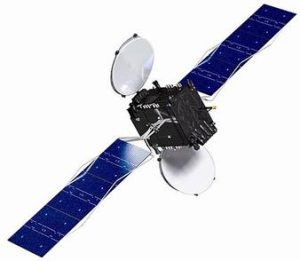Satellites are complex systems composed of various essential components that work together to achieve mission objectives. Each satellite component plays a unique role, enabling communication, data collection, navigation, and environmental monitoring in space. By understanding the key components of a satellite, we gain insight into how these space systems function and support critical global operations.

The Core Components of a Satellite
Satellite components are typically categorized into subsystems that perform specific functions. Some of the most essential components include the power system, attitude control, communication system, thermal control, and payload. These components are designed to withstand the harsh space environment and operate reliably for the satellite’s mission duration.
Power System
The power system is one of the most vital satellite components. Solar panels, batteries, and power distribution units collectively provide and regulate energy for the satellite’s operation. Solar panels convert sunlight into electricity, while batteries store energy to power the satellite during periods of eclipse when sunlight is unavailable. Effective power management ensures continuous satellite function throughout its mission.
- Solar Panels: Photovoltaic cells in solar panels capture solar energy, which is then converted into electrical power.
- Batteries: Essential for storing energy, batteries power the satellite when it passes through the Earth’s shadow.
- Power Control Unit: This component regulates and distributes power to each satellite subsystem.
Communication System
The communication system enables the satellite to send and receive data between Earth and space. This system includes antennas, transponders, and transmitters, which collectively handle data relay, telemetry, and command transmission. The communication system is integral for maintaining contact with ground stations and transmitting collected data back to Earth.
- Antenna: A vital component for signal reception and transmission, the antenna facilitates communication with ground control.
- Transponder: This device amplifies received signals and retransmits them, ensuring efficient data flow between the satellite and ground stations.
Attitude Control System
The attitude control system (ACS) stabilizes and orients the satellite, ensuring its antennas and sensors are accurately directed toward Earth or space targets. Components such as reaction wheels, gyroscopes, and magnetic torquers are integral to this system, allowing precise adjustments to the satellite’s orientation. Proper attitude control is crucial for imaging satellites, as any misalignment can result in blurred or unusable data.
- Reaction Wheels: These allow fine adjustments in orientation without the use of propellant.
- Gyroscopes: These components provide the satellite with angular velocity measurements, aiding in orientation control.
- Magnetic Torquers: Used in conjunction with reaction wheels, magnetic torquers interact with Earth’s magnetic field to manage the satellite’s orientation.
Thermal Control System
Satellites encounter extreme temperature fluctuations in space, making thermal control a vital component for operational stability. The thermal control system includes insulation, radiators, and heat pipes that help manage the internal temperature of the satellite, ensuring sensitive electronics remain within optimal ranges.
- Thermal Blankets: Insulating layers that protect the satellite from temperature extremes.
- Radiators: These dissipate excess heat to prevent overheating of onboard electronics.
- Heat Pipes: These transfer heat from warmer areas to cooler sections within the satellite.
Onboard Computer System
The onboard computer, or satellite control unit, is the central processing system that manages all satellite components. It executes commands from ground control, processes data, and handles critical functions such as power management and fault detection. The onboard computer is designed for reliability and redundancy, ensuring continuous operation even in the event of a minor system failure.
- Central Processing Unit (CPU): The CPU processes data, manages satellite functions, and executes commands from Earth.
- Memory Storage: Stores essential data, including telemetry information, sensor data, and mission-critical software.
Payload
The payload is the satellite’s primary mission component, customized to meet specific mission goals. For communication satellites, this might include transponders and antennas, while Earth observation satellites use high-resolution cameras and sensors. The payload is carefully designed to match mission requirements, enabling the satellite to perform tasks such as data collection, imaging, or broadcasting.
- Imaging Sensors: Used in Earth observation, imaging sensors capture visual data from orbit.
- Scientific Instruments: These may include spectrometers, magnetometers, or radiation detectors, depending on the satellite’s mission.
Advanced Satellite Components and Technologies
In addition to core systems, modern satellites often include advanced components that enhance performance and mission capabilities. These components may include propulsion systems, inter-satellite links, and advanced sensors, which enable greater maneuverability, communication, and data collection.
Propulsion System
The propulsion system enables orbit adjustments and station-keeping, which is critical for satellites in geostationary orbit. Thrusters and electric propulsion systems help maintain the satellite’s designated orbit, ensuring that it remains within range of its target areas.
- Thrusters: Chemical thrusters provide bursts of energy to change orbit or altitude.
- Electric Propulsion: Electric propulsion systems offer highly efficient, gradual orbit adjustments, extending the satellite’s operational life.
Inter-Satellite Links
Inter-satellite links (ISLs) facilitate communication between satellites within the same constellation. This capability is particularly valuable for low Earth orbit satellite networks, where satellites must coordinate to provide continuous coverage.
- Laser Communication: Provides high-speed, secure data transfer between satellites, minimizing reliance on ground stations.
- RF Links: Radio frequency links offer an alternative to lasers, ensuring robust communication between satellites.
Importance of Satellite Components in Mission Success
Each satellite component plays an essential role in mission success, and their combined functionality allows satellites to operate effectively and meet mission goals. Components such as power systems, communication modules, and attitude control enable satellites to collect and transmit valuable data while maintaining stability and orientation. As technology advances, satellite components continue to evolve, enhancing the scope and efficiency of satellite missions across various fields.
Understanding satellite components is fundamental to designing and launching successful space missions. Each component must be precisely engineered to ensure resilience in the demanding environment of space, ultimately contributing to advancements in Earth observation, global communication, scientific research, and more.
